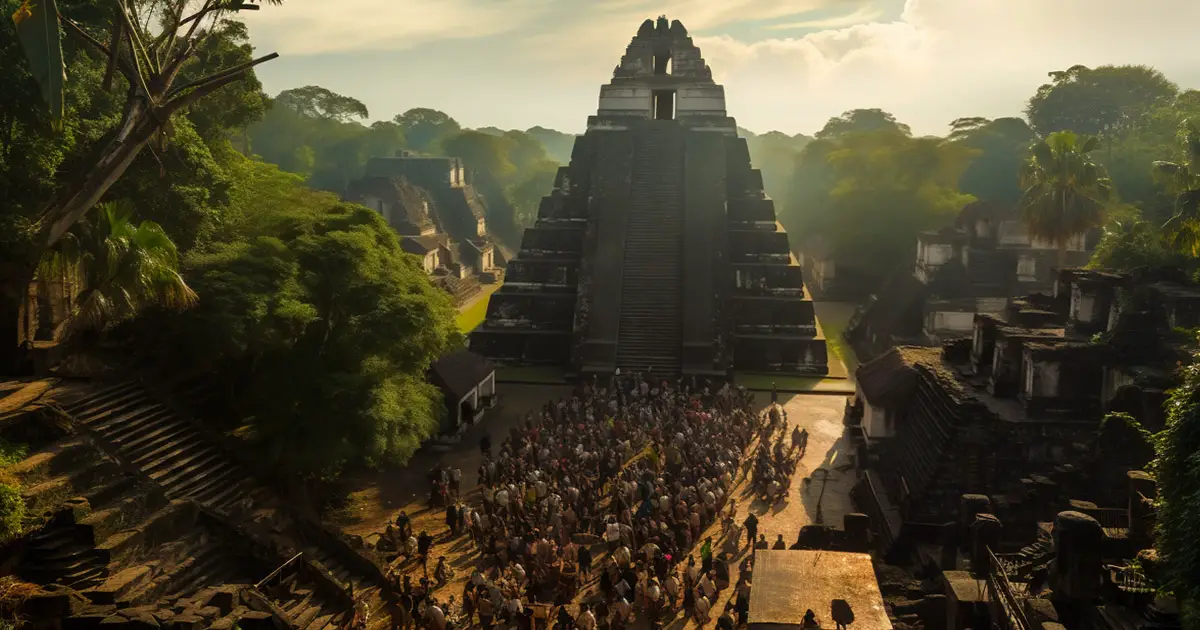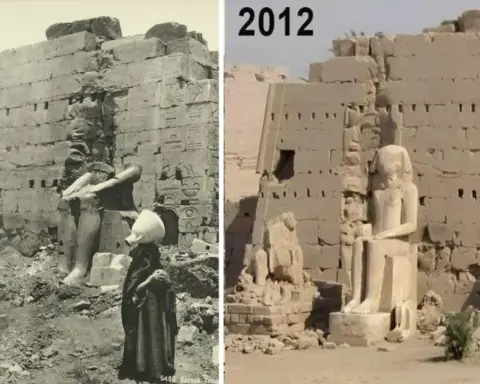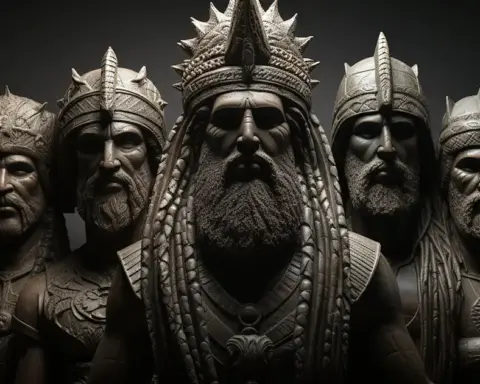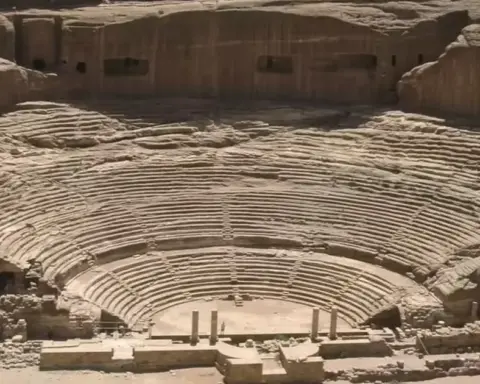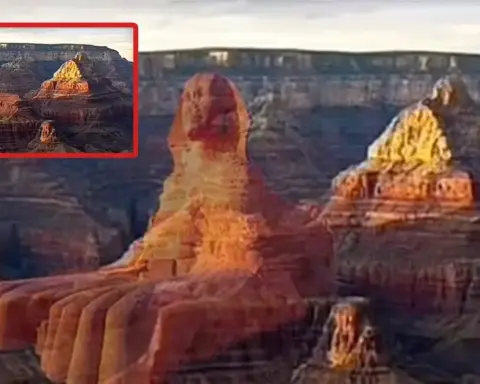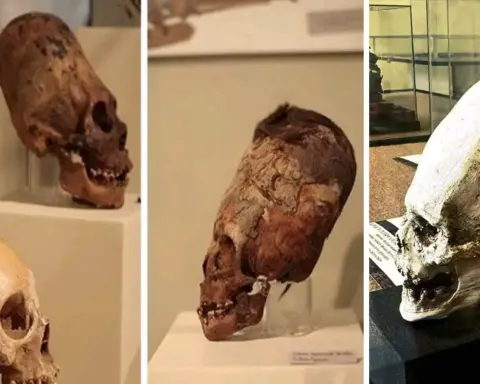Deep in the heart of Guatemala, cloaked by the dense foliage of the jungle, lies the enigmatic remains of Tikal, one of the largest ancient cities of the Mayan civilization. This jungle megopolis, occupied for more than a millennium, consists of over 12,000 buildings, its grandeur towering over more than 40 other cities. Comparable in importance to today’s major metropolises like London, Paris, New York, or Shanghai, Tikal holds secrets of a civilization that was both mysterious and advanced.
The Architectural Marvel of the Mayans
At the core of Tikal’s allure are its monumental pyramids, constructed with an ingenuity that baffles modern scholars. The Mayans, without the knowledge of metallurgy, wheels, or working animals, erected edifices that challenge our understanding of primitive technology. Their structures, built on wide rectangular bases with compartments of cut stones joined by mortar, demonstrate a mastery over their materials and environment. These pyramids, often likened to Russian dolls for their nested construction, stand as testaments to the ambition of Tikal’s rulers, each king striving to outdo his predecessor and leave an indelible mark on the landscape.
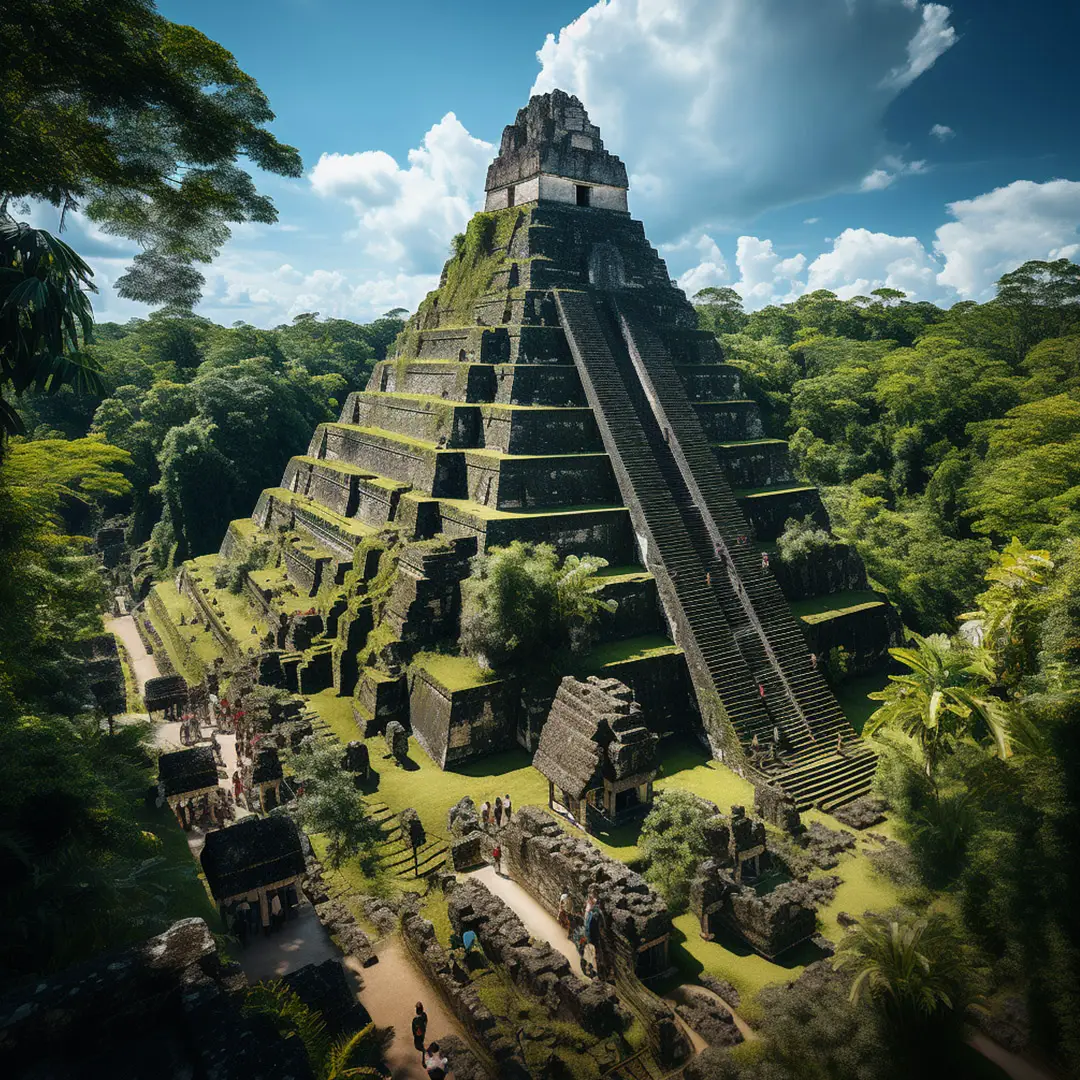
The Astronomical Genius of the Mayans
Tikal’s relationship with the cosmos reveals a civilization deeply fascinated by the stars. The mythical Lost World, serving as an astronomical observatory, underscores the Mayans’ sophisticated understanding of celestial bodies. With no optical devices, they meticulously tracked the solstices, equinoxes, and eclipses, their predictions astonishingly accurate for a civilization relying solely on the naked eye. This celestial dedication not only showcases their scientific prowess but also their spiritual connection to the universe, integrating astronomical phenomena into their religious rituals and construction orientations.
Water Management: A Testament to Engineering Skill
The ingenuity of Tikal extends beyond its pyramids and observatories to its impressive water management systems. In a region where rain could cease for months, the Mayans engineered monumental reservoirs and sophisticated drainage systems to harness and store water, ensuring the survival of their populous city. These feats of hydraulic engineering, essential for the prosperity of Tikal, highlight a deep understanding of their environment and an ability to innovate solutions for survival.
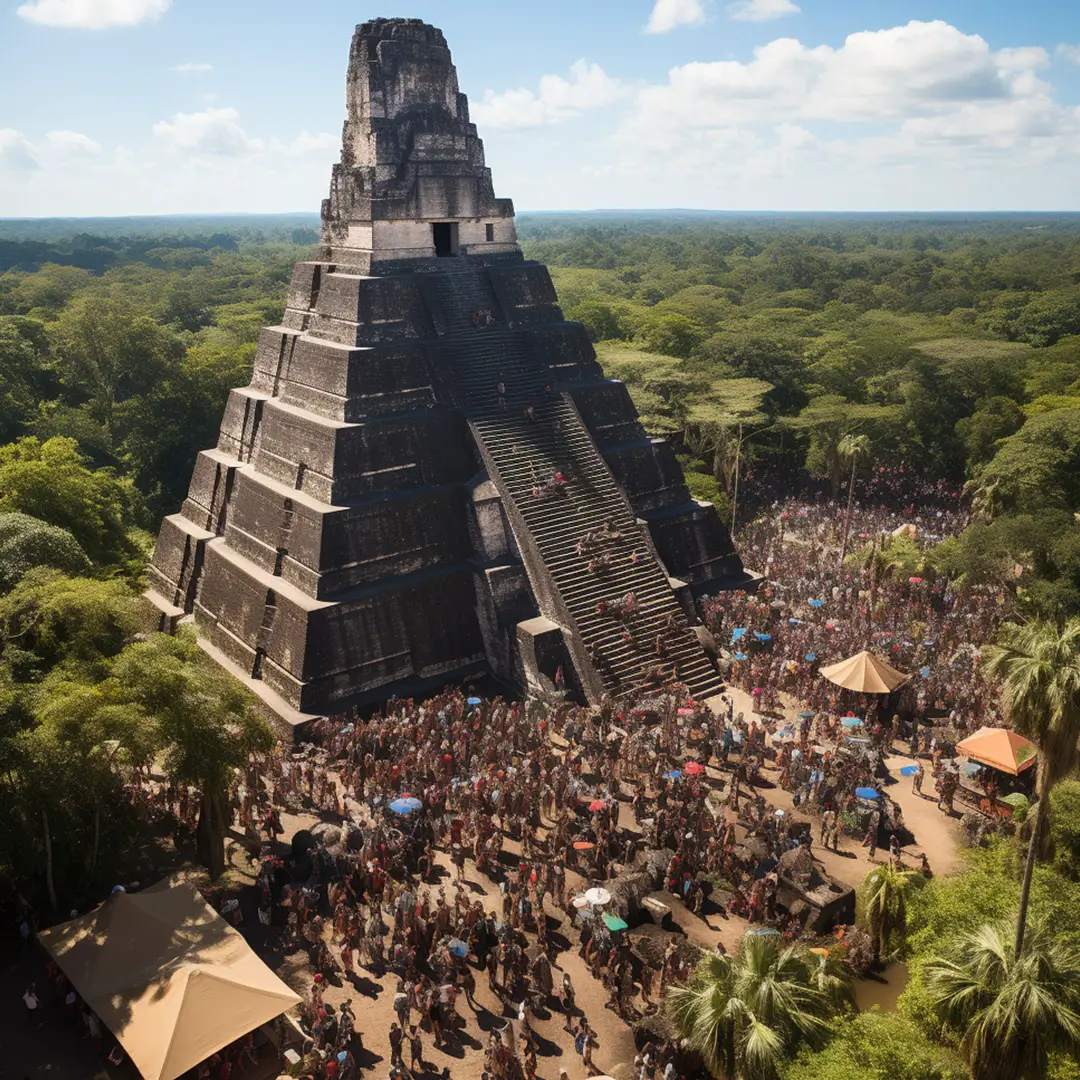
The Ball Game: A Ritual of Power and Politics
Tikal’s ball game, a ritualistic sport imbued with symbolic meaning, reflects the complex social and political life of the Mayans. Far from a mere recreational activity, the ball game symbolized the cosmic struggle between day and night, life and death. Played in colossal courts that were political centers as much as they were athletic arenas, the game underscored the Mayans’ belief in the interconnectedness of earthly and divine realms. The participation of kings and nobles in these games further cemented their status, demonstrating power and divine favor in a public spectacle.
Tikal’s Legacy: The Resilience of Mayan Culture
Despite the passage of centuries and the eventual decline of Tikal, the legacy of this ancient city and its people endures. The resilience of Mayan culture is evident not only in the ruins that have withstood the test of time but also in the six million Mayan descendants who continue to inhabit Central America and southern Mexico. The enduring practices, languages, and traditions of the Mayan people are a living bridge to the past, a testament to the enduring spirit of a civilization that, in its heyday, was a beacon of architectural, astronomical, and engineering prowess.
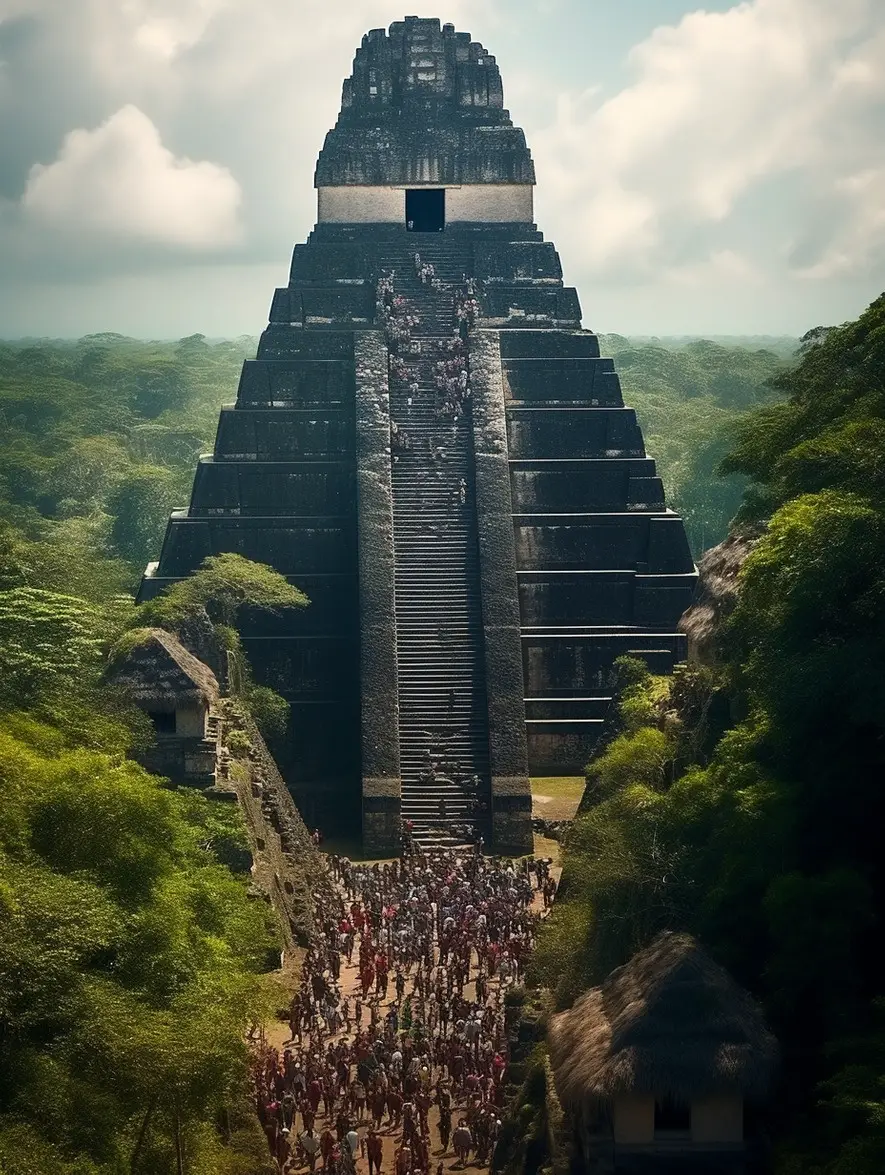
The Vanishing of Millions
At the pinnacle of its cultural and architectural splendor, the Maya civilization boasted a population of upwards of 20 million. However, following their sudden collapse, an estimated 95% of these people vanished without a trace or explanation. This mass disappearance occurred in the absence of warfare or destruction, deepening the mystery of why and where they went.
The Mayan Calendar and Its Cosmic Significance
Historical analysis indicates that the disappearance of the Maya coincided with the culmination of one of their calendar cycles. The Mayans, renowned as master timekeepers, created the Long Count calendar, spanning 5,125 years and divided into 13 baktuns, each approximately 400 years. Interestingly, there is no record of the Mayans celebrating the end of the 10th baktun around 830 AD, a deviation from tradition that raises questions about their knowledge of impending events.
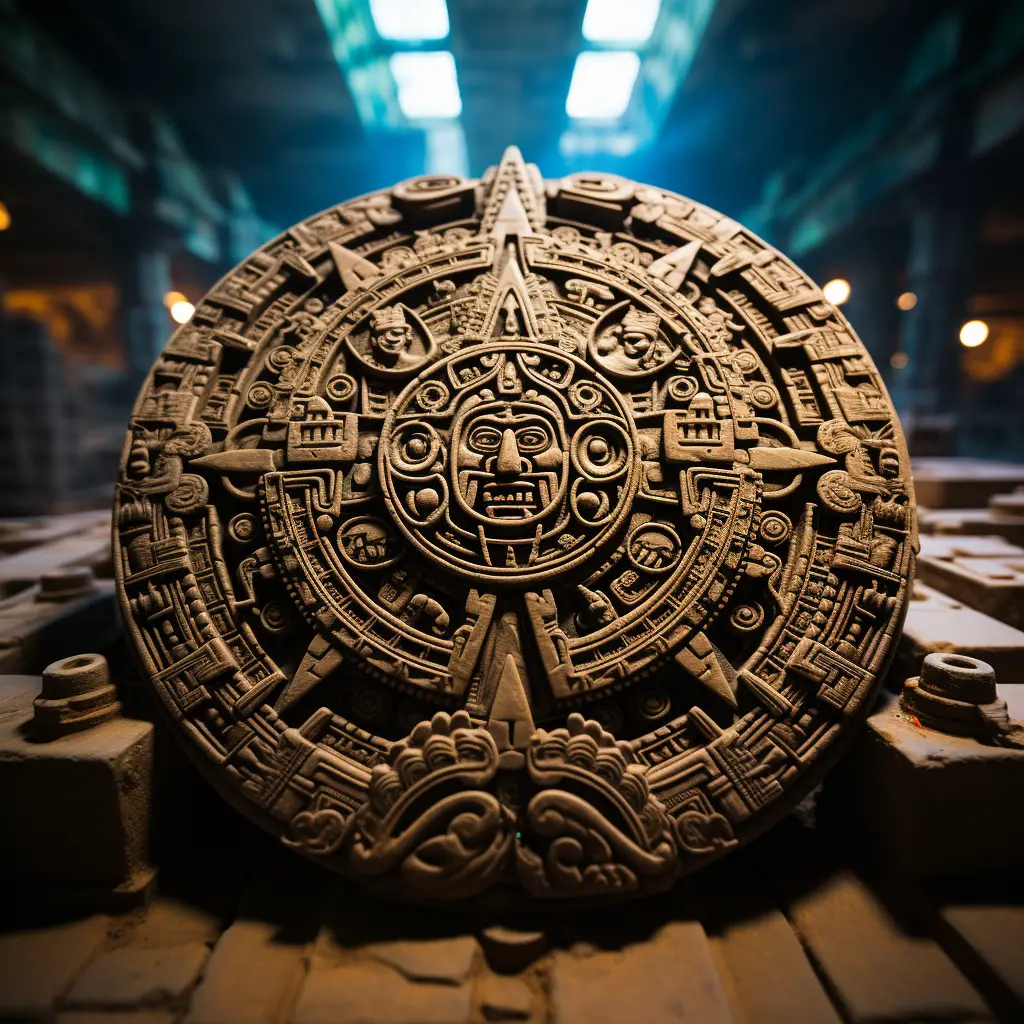
The Pleiades Connection: A Clue to Their Destination?
In exploring this mystery, archaeoastronomers have observed significant alignments between Mayan pyramids, particularly the seven central pyramids in Tikal’s Grand Plaza, and the Pleiades star cluster. This celestial pattern, revered across many ancient cultures, might hold clues to the Mayan departure. Intriguingly, abduction lore often cites the Pleiades as the origin of extraterrestrial visitors, paralleling ancient theories that the Maya themselves might have originated from this star cluster.
The Theory of Cosmic Harvest and Abduction
Some theorists propose a radical interpretation of the Maya’s departure: a mass abduction orchestrated by extraterrestrial beings from the Pleiades. This hypothesis suggests that the Maya’s meticulous timekeeping and calendar were part of a grand cosmic countdown, culminating in their return or “harvest” to their celestial home. This theory aligns with narratives from present-day Maya, who speak of their ancestors “going home,” possibly to a location beyond Earth.
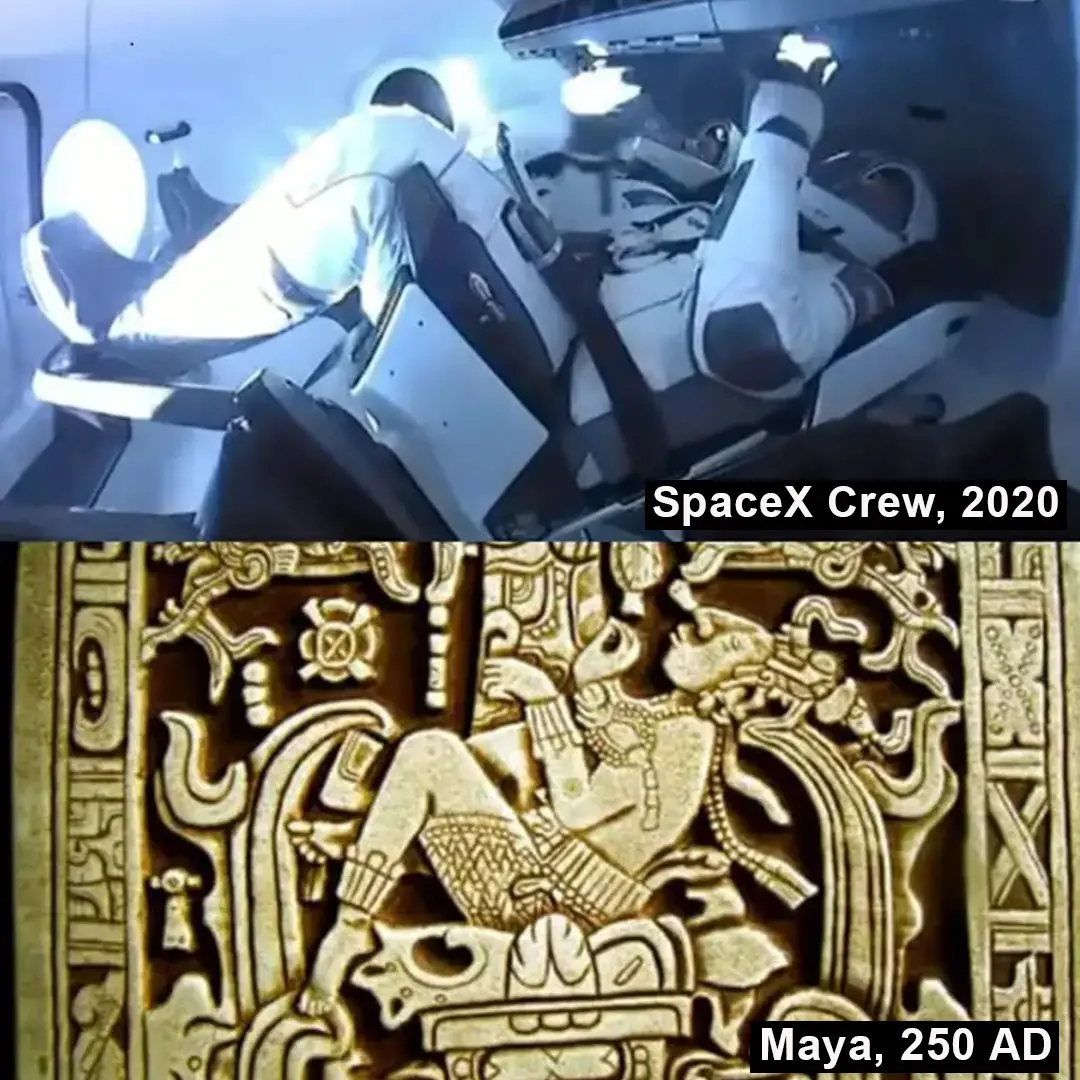
The New Dawn of a Maya Calendar Cycle
The end of the Maya calendar cycle and the start of another could signify more than just a chronological milestone. To certain interstellar intelligence, this transition might have been a signal for a significant event – possibly the planned return of the Maya to their cosmic origins. The intertwining of Maya architectural marvels, their advanced astronomical knowledge, and the enigma of their disappearance create a tapestry of mystery, possibly woven with threads of extraterrestrial influence.
If the Maya civilization were still around today, they might have built an advanced and futuristic city.
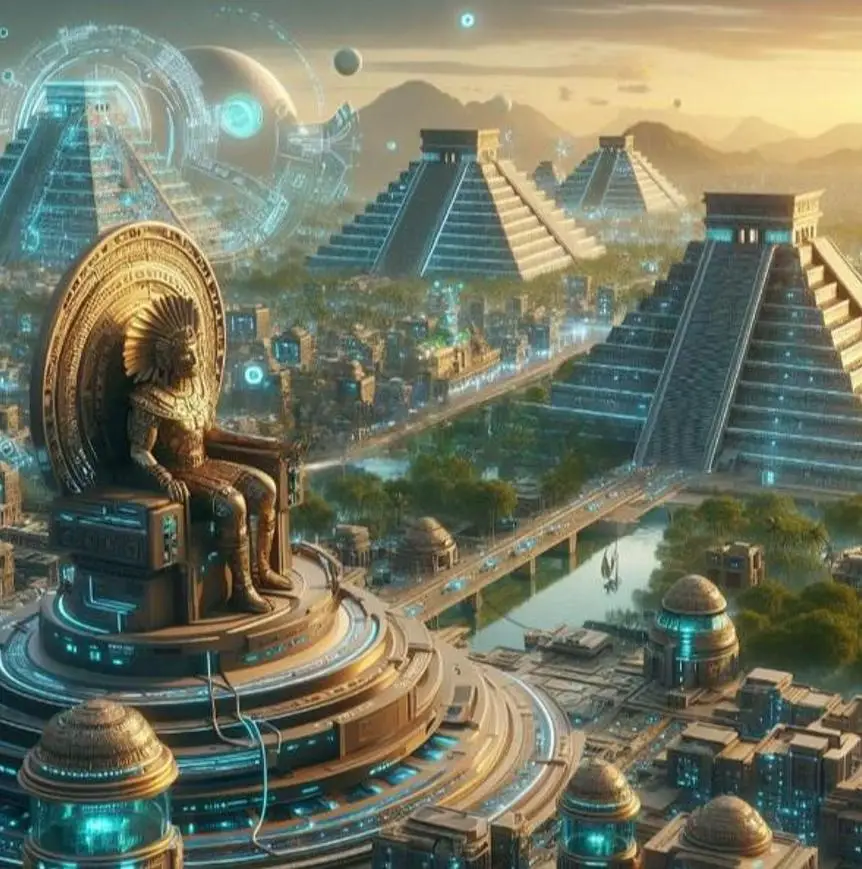
The Maya civilization’s sudden decline continues to intrigue scholars and enthusiasts alike. The clues they left behind in their majestic cities, aligned with the stars, suggest a civilization deeply connected with the cosmos. Whether their disappearance was due to terrestrial challenges or a predestined journey to the stars remains one of the most captivating mysteries of the ancient world.

